The History of St Botolph’s Church Clock
The history of our clock dates back to the late 1800s. Although the clock faces appear to have been included in the building of the tower which began in 1873, initially no actual clock was installed.
The faces were intended for a town hall, but as this wasn’t built they were placed on St Botolph’s tower. In 1883 determined efforts were made to raise the necessary finance to install a clock by way of subscription. It was erected by Potts & Sons of Leeds and it was opened on Thursday 10 April 1884. Mrs Edwards wife of the Vicar Rev J W G Edwards set the clock in motion. An hourly striking mechanism was installed in 1896.
The clock and its mechanism date from1884. There are four, approximately 8’ diameter clock dials.
The clock movement is a half hour striking flat-bed design with a double three legged gravity escapement made by William Potts of Leeds 1884.The clock movement drives four sets of clock dials, the dials are made of cast iron with acrylic central glazing .
The Potts family came from the North East of England. William Potts set up his own business making clocks in Pudsey in 1883. 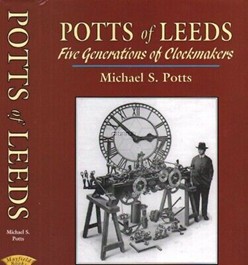
He had been apprenticed to Samuel Thompson a Darlington clockmaker before moving to Pudsey at the age of 24.
William’s company began making domestic clocks and when this was a success, he started manufacturing and repair Turret clocks, jewellery and silverware. Turret clocks are large pendulum clocks with hanging weights, modern clocks often run by electricity.
In 1862 the Company mass produced clocks for schools, offices, railways and exported clocks over all the world.
The Company was sold to John Smith of Derby in 1935 where they moved to Bayfield Terrace Burnley Leeds. In year 2000 the premises sadly closed.
Repairs to the Clock
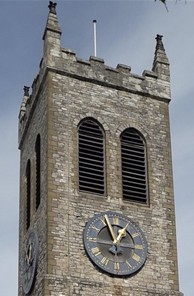 The church was inspected by the church architect firm from Leeds, Pearce Bottomley LLP.
The church was inspected by the church architect firm from Leeds, Pearce Bottomley LLP.
The report is legal requirement and it is the document which assists and guides the PCC (Parochial Church Council) in the care and repair of the church building. It gives the level of priority for each recommendation.
When our last report was issued to the PCC, in September 2022, it stated our clock needed painting or what we thought just needed painting at the time.
In 2016 the annual service report stated that the four sets of dial motions works had worn bearings. (At the time I doubt if we were able to afford the work). The worn bearings weren’t dangerous however, as we were having work done on the clock, it would save more expense in the future, and while scaffolding and everything was on hand scaffolding etc, the PCC felt that it was good idea to have the clock overhauled and then restored. The most recent annual service report supported the Quinquennial Report in stating that the clock dials were faded and would benefit from restoration.
Every five years a Quinquennial Report is required for every church. This is a report on an inspection which has been a statutory requirement for all churches since 1955.
The Process
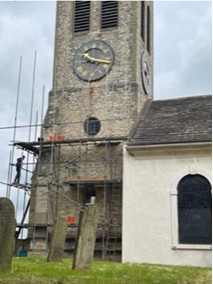 We consulted Hills Tower Clocks and the Cumbria Clock Company as both firms have worked on our clock previously. They submitted quotes.
We consulted Hills Tower Clocks and the Cumbria Clock Company as both firms have worked on our clock previously. They submitted quotes.
We appointed the Hills company, Terry Hills knows the clock as he services it regularly. The majority of the work was done in situ while some pieces were removed and taken to the workshop for repair.
Tom Precious, the DAC (Diocesan Advisory Committee) clock specialist who oversaw our faculty application 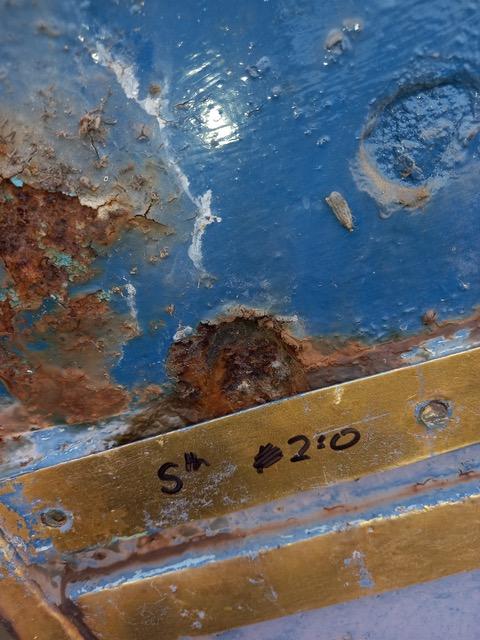 for permission to have the work done, did mention we would probably need more than the painting of the clock as there had been problems regarding the dials. Tom had serviced the clock for many years ago before handing over to Terry, so he also knows the clock very well.
for permission to have the work done, did mention we would probably need more than the painting of the clock as there had been problems regarding the dials. Tom had serviced the clock for many years ago before handing over to Terry, so he also knows the clock very well.
It was estimated that work on the church clock would take around 13 weeks.
The scaffolding was erected on 20 June 2024. This in itself was a major undertaking and it took a week or so to put up safe scaffolding to allow access to all four faces of the clock.
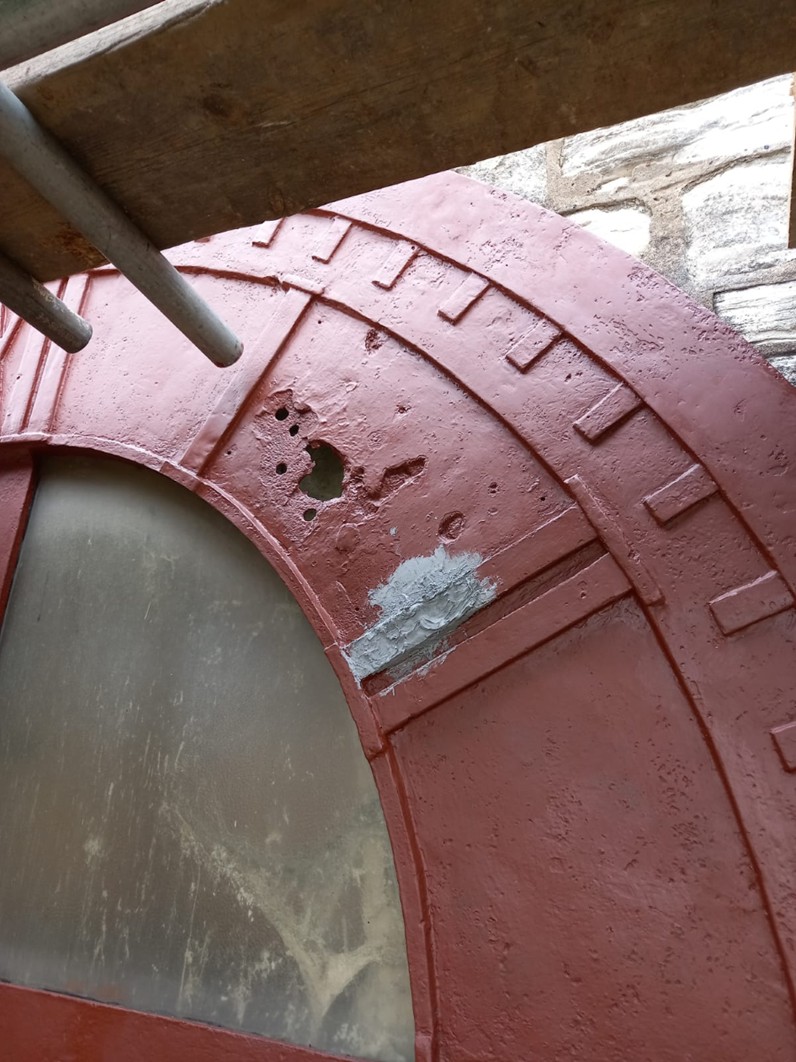 When the work started the clock was stopped, all four sets of dial motion works were disconnected and the hands were removed in order to withdraw the dial motion works.
When the work started the clock was stopped, all four sets of dial motion works were disconnected and the hands were removed in order to withdraw the dial motion works.
The dials were then prepared for painting using a rustoleon paint system, applying rust inhibitor as necessary to the clock dials applying small amounts of metal filler to them. Then one coat of damp proof primer was applied on most parts inside and out. As the dials turned to a shade of rusty red Terry described them as going through their “Angel of the North” phase.
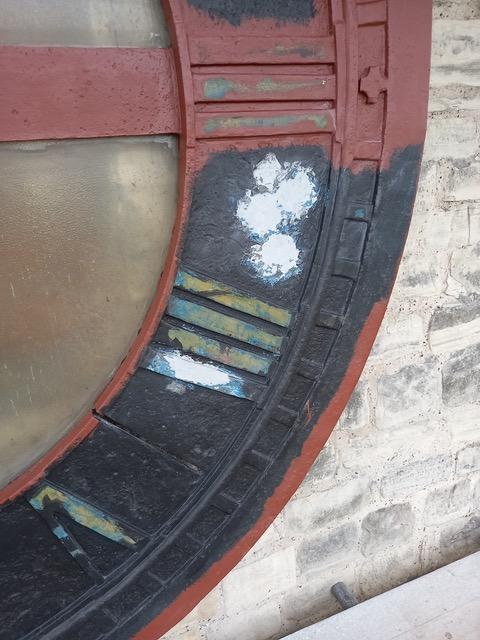
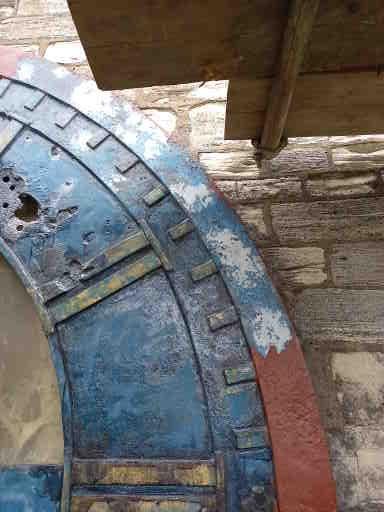
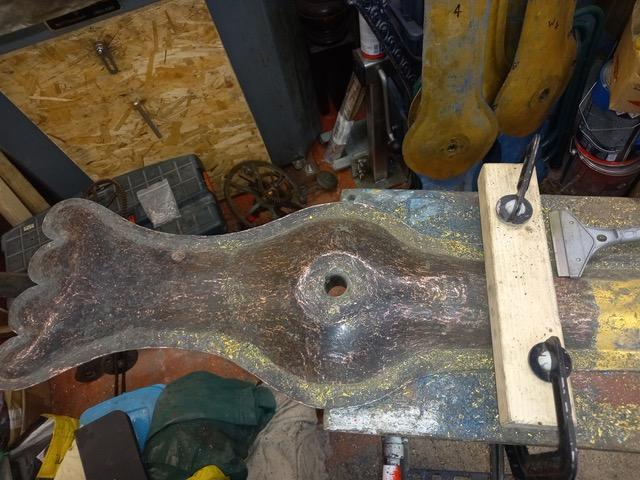 The clock hands were removed and taken away.
The clock hands were removed and taken away.
When the clock hands were in the work shop they were fully restored. This was more difficult than anticipated as they were layered and the inner layers had corroded. This was addressed and the hands were painted before being returned to the tower and put in place.
Before the hands were replaced the clock dials ready were marked ready for gilding the numerals and then the minute marks etc were covered with 24 carat extra gold leaf.
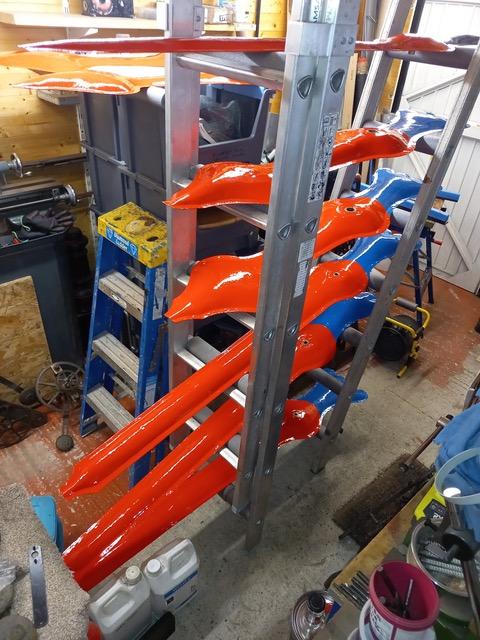
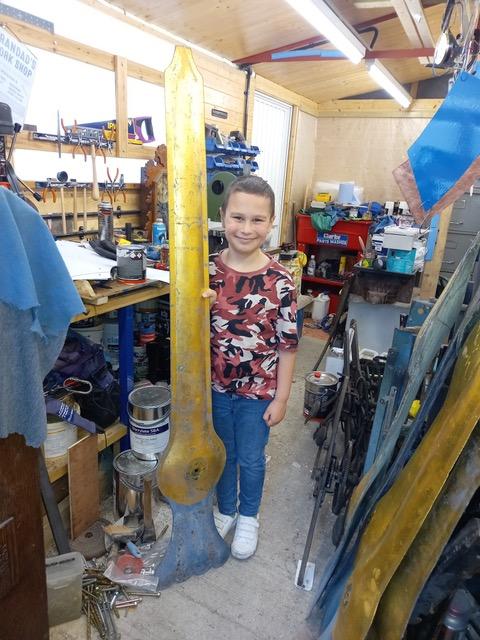
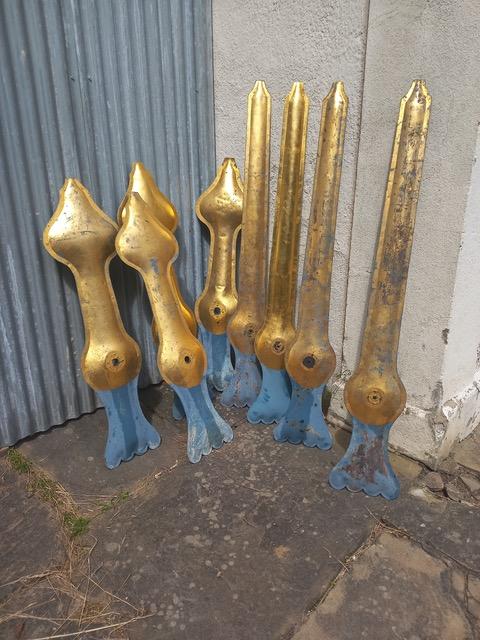
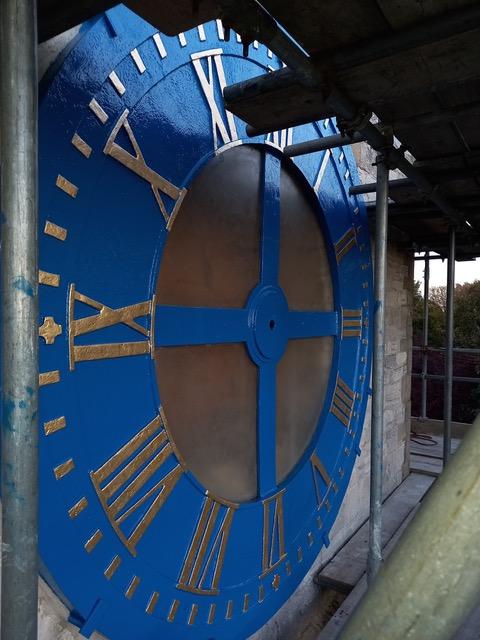
The clock dials were painted then marked out ready for gilding the numerals and minute marks etc with 24 carat extra gold leaf.
The cast iron clock dials are very heavy and the existing iron dials fixing are very old, so it was recommended for safety that new unobtrusive stainless steel fixings should be fitted around each edge of each clock dial . Should the original dial fixings fail, the clock dials will be safe and firmly attached to the Tower wall by the new stainless steel fixings.
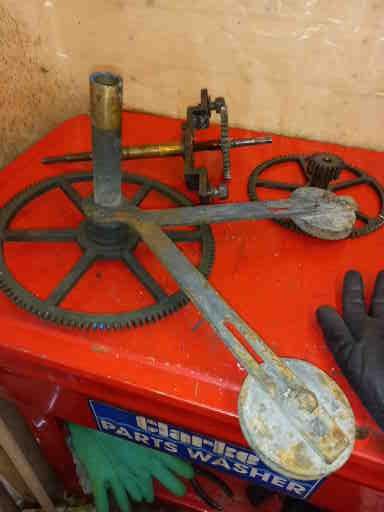
Terry overhauled all four sets of dial motion works including lining brushes, firmly securing all four internal minute balance to the internal end of the minute spindle this will reduce hand balancing issues. There are twenty-seven new clock dials fixings consisting of stainless steel threaded rods, he drilled the fixing holes to fit the stainless steel fixings tightly around the edge of each clock dial.
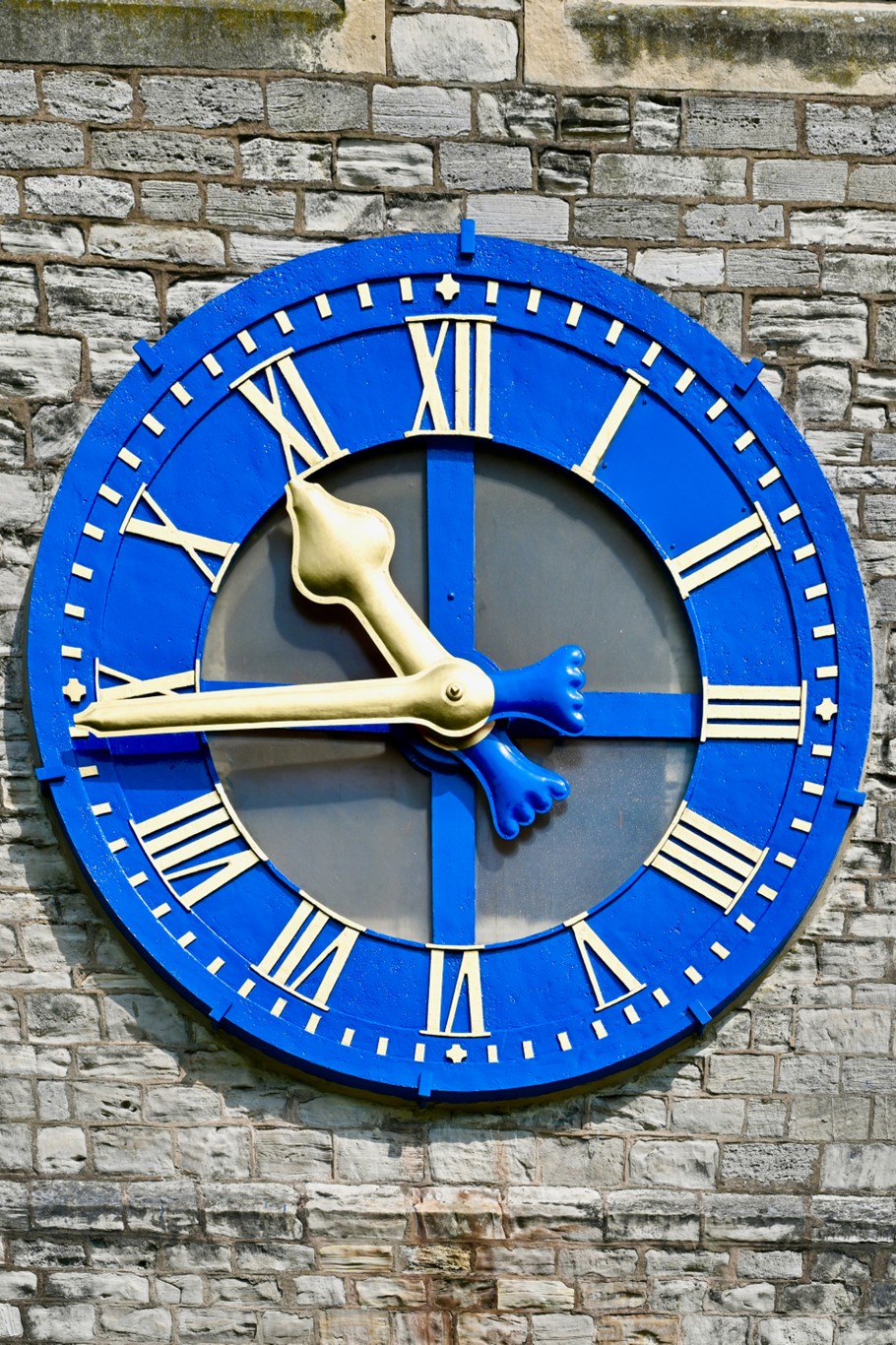
The work took much longer than estimated, as is often the case with restoration projects, and we had to pay extras the scaffolding was needed for longer than planned.
Looking at the clock now we are sure that it was all worth it.
We would like to thank EVERYONE who contributed to our clock appeal.
The appeal is still running as we strive to reach our target.
